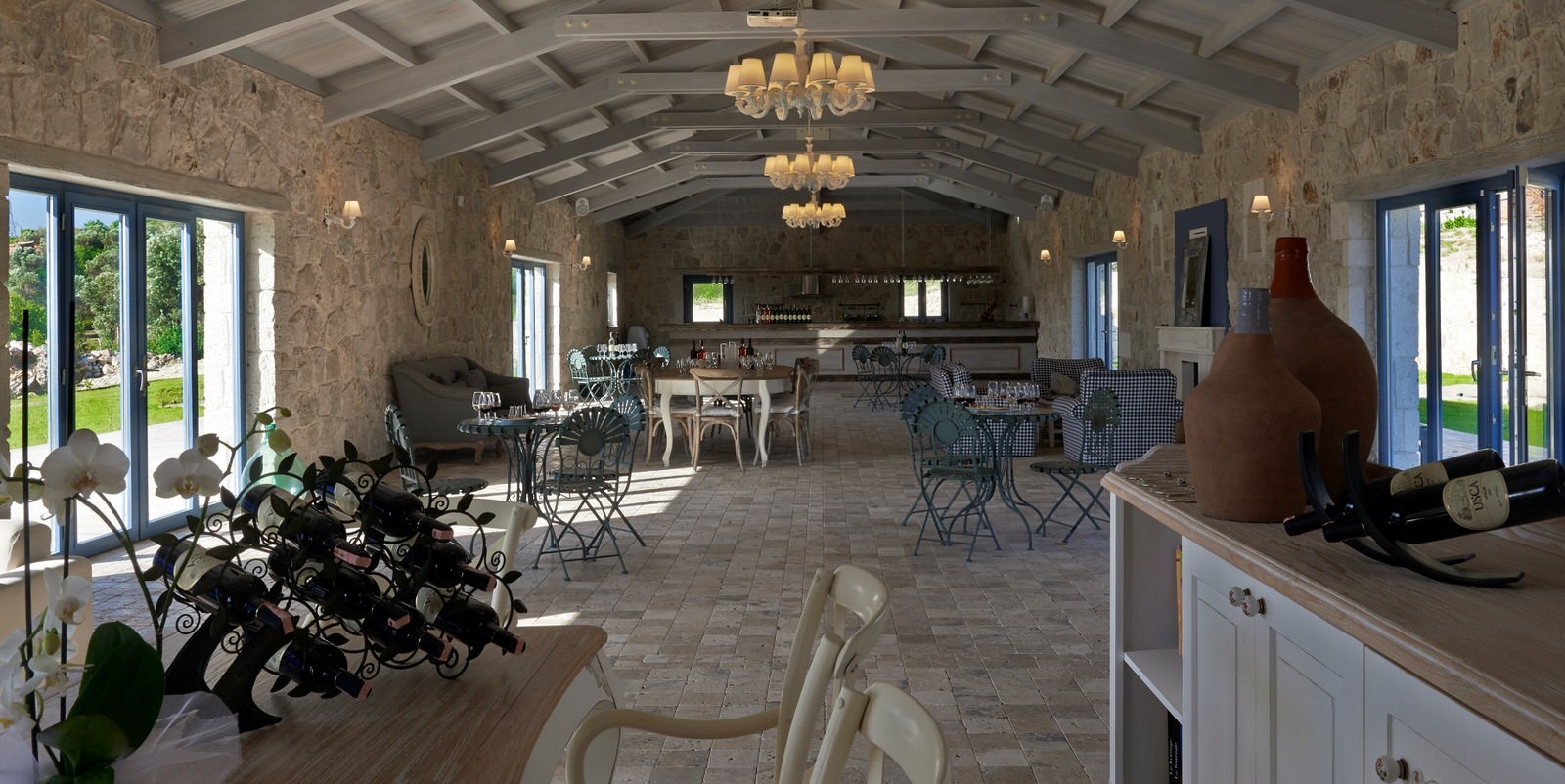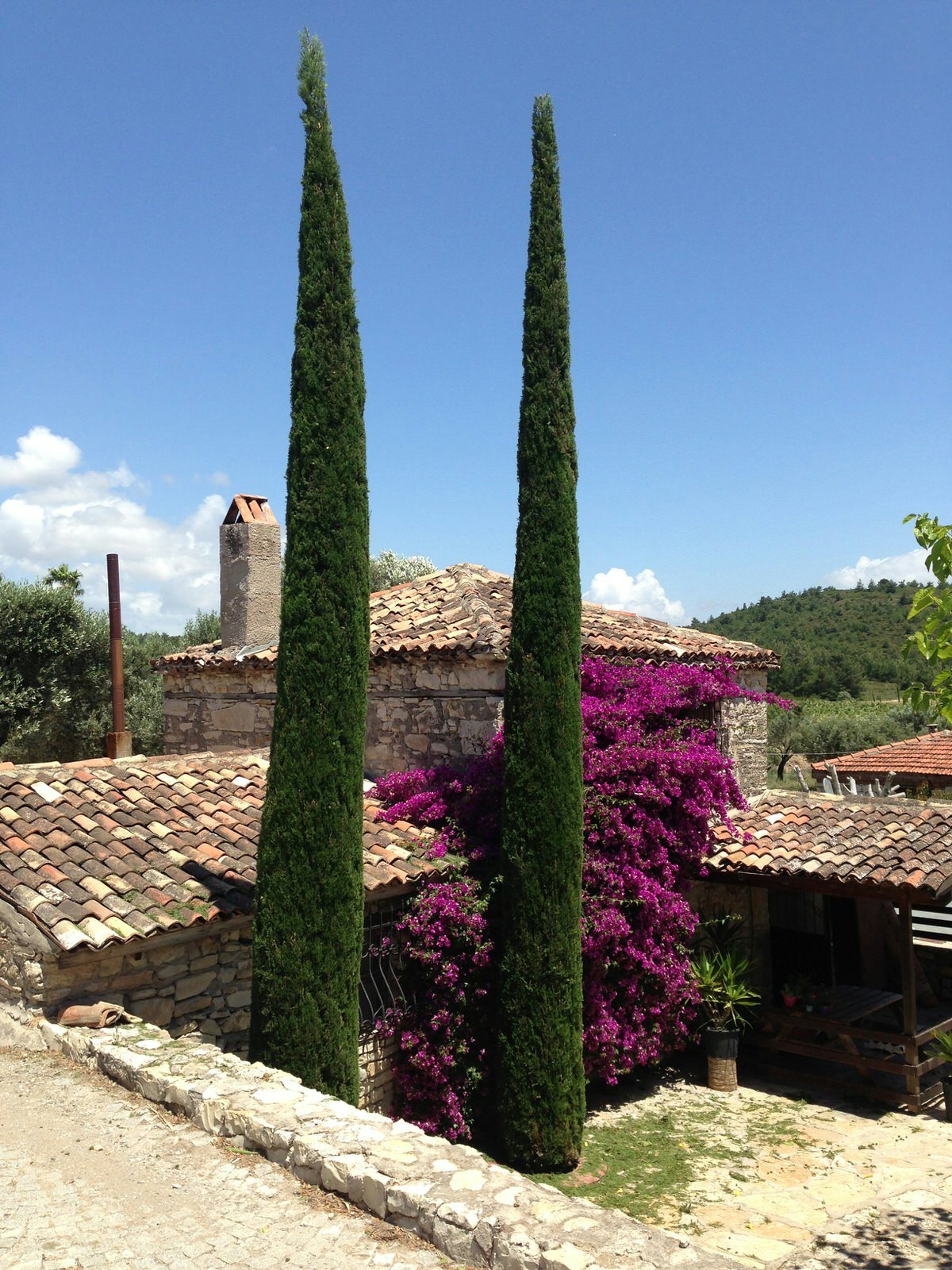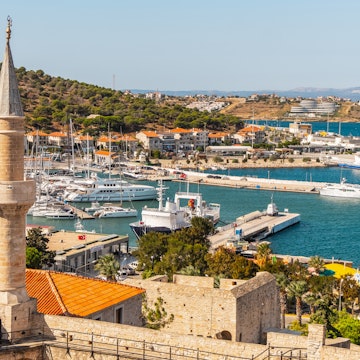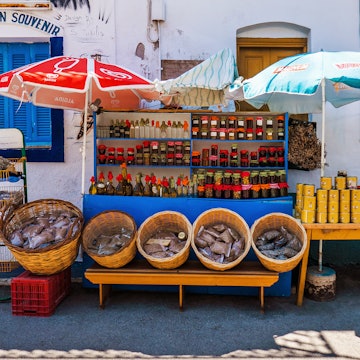

Urla vineyards are young, but winemaking in this part of Turkey dates back 4000 years © Turkish Tourism Office
Along Turkey’s scenic and serene Aegean coast, chefs, winemakers and food producers are reviving old flavours and cultivating new tastes. Less than an hour’s drive from İzmir town, small vineyards have banded together to form the Urla Wine Route, and new grassroots lodgings for tourists are making the peninsula more accessible.
The strong gusts that blow steadily off the sea around the İzmir Peninsula in western Turkey have made Alaçatı, the area’s ritziest resort town, a hotspot for windsurfers from around the world. But in the nearby agricultural fields of Urla, the winds are helping nurture another industry altogether: wine.
‘We plant our vines in the direction of the wind. It’s good for the grapes because it dries up some of the humidity and makes them less vulnerable to fungal diseases,’ explains winemaker Bilge Bengisu Öğünlü over a glass of her deep ruby-coloured Cabernet Sauvignon. Bilge runs Urlice Vineyards, one of a growing number of boutique winemakers in this bucolic rural region, its rolling hills still largely covered with olive trees.

Izmir’s winemaking history
Bilge and her husband, Reha, started producing wine commercially in 2006, making them one of the pioneers among the new wave of Urla vintners. But the İzmir area’s oenological history is long — around 4000 years long. ‘There are stories about Roman emperors being jealous of the quality of wine coming from this area and blocking imports,’ Bilge says, sitting in the small rustic stone building set amid Urlice’s vineyards that serves as the winery’s tasting room and restaurant.
The oldest winemaking artefacts found in the İzmir area – storage jugs, crushing stones and grape seeds dating back to before 1700 BC – have been uncovered at a Bronze Age archaeological dig 50km from Urla whose name, Bağlararası, translates as ‘between the vineyards’. Today, the site lies hidden in the backstreets of the resort town of Çeşme.
The region’s wine industry thrived until it got hit by a one-two punch of parasites and politics in the early 1900s, Bilge explains. First, the phylloxera bug that nearly wiped out the French wine industry in the mid-1850s made its way over from Europe, damaging the area’s vineyards. Then, the 1923 Greek–Turkish population exchanges that followed the end of World War I and the subsequent Turkish War of Independence dramatically changed the İzmir area’s demographics.
‘The Greeks who were living here and knew how to tend the vines were shipped to Greece,’ Bilge says. Despite that, the region is still dappled with charming traditional Greek stone houses and Greek culinary traditions remain a strong part of the coastal region’s heritage.

Urla’s food traditions
‘Our cuisine here is very mixed. This, for example, is an old dish from Crete, a 200-year-old recipe,’ Nurcan Hanım, a member of a local women’s cooperative in Çeşme, explains as she dishes up a sample of cağla badem arapsaçı bakla (green beans with unripe almond and wild fennel), topped with yoghurt, fresh garlic and a sprinkling of red-pepper flakes.
Another traditional flavour of the Greek Aegean is mastiha, or mastic (damla sakızı in Turkish), a piny tree resin. On its own it’s an acquired taste, but on the main shopping street in Çeşme people still line up to buy mastic-infused treats at the tiny Rumeli Pastanesi. The old-fashioned pastry shop, in business since 1945, is known for its mastic-flavoured ice cream.
Most mastic comes from the Greek island of Chios, just 7km off the coast of Çeşme and a popular daytrip from Turkey. But officials in the Çeşme district are trying to revive mastic production as part of efforts to make the area a centre for gastronomic tourism. Mastic trees have been planted in Çiftlikköy, a village near Çeşme, and on the outskirts of Alaçatı.

Going wild for plants
The area’s wild greens – known collectively in Turkish as ‘ot’ – are celebrated each spring at the popular Alaçatı Ot Festivali. People from around the region stream into Alaçatı’s tiny town centre to attend cooking demonstrations, participate in herb-gathering excursions in the hills around town, and sample the greens-inspired wares of local home cooks – from thyme honey to lavender-flower paste and nettle bread to spinach cake.
These local herbs and greens, traditionally harvested on a subsistence basis, have become so trendy to cook with that they risk being overharvested. Alaçatı now has a demonstration garden behind its municipal building where neat rows of local herbs and greens are planted: dandelion, golden thistle, wild fennel, chicory, sea beets, mallow and sorrel, among dozens of others. Here, horticulturists hope to determine which ot can be cultivated in gardens in order to reduce the pressure on wild populations.
Year-round, dishes of cooked wild greens bathed in olive oil feature heavily on the menus of the dozens of small restaurants tucked away on Alaçatı’s winding cobblestone streets, many inside restored stone houses so picturesque they look like they must be part of a movie set. Traditionally paired with rakı, an anise-flavoured spirit similar to the Greek ouzo, these meze dishes also go very well with the acidic white wines of the region.

Creating the Urla Wine Route
Most of the wines produced at Urlice and other wineries in the Urla area are made from international grape varietals, but many vintners here are bringing back forgotten endemic varieties, too. Bornova misketi, a white wine with sweet, citrusy tones, is one of the most popular with local winemakers, including Serpil Şener of USCA, whose small production line also features a Shiraz blended with the local Foça karesi grape.
‘Foça karesi is an ancient grape whose history has been traced back almost 2,600 years,’ says Serpil. ‘It travelled west with Greek and then Genoese and Venetian merchants, and is believed to be the ancestor of grapes in France’s Rhone Valley that have a similar genetic profile.’ Like others along Turkey’s Aegean coast, the Foça karesi vines dwindled after the 1920s, but recent decades have seen a campaign to revive the aromatic, fruity varietal.

Serpil, who got her law degree in İzmir, first visited the Urla area to inspect a plot of land involved in a lawsuit. ‘Looking out at the olive trees and vineyards, and that view over the sea, changed my life,’ she says. Three years later, she bought the vineyard that became USCA.
The small production runs of family-owned wineries such as Urlice and USCA have made it difficult for them to get broad distribution. High taxes on alcohol, strict limitations on alcohol advertising, an undeveloped domestic wine-drinking culture, and some rocky years for the country’s tourism industry add to the challenges facing the new crop of boutique vintners.
Instead, Urla’s wineries have turned to tourism. In 2016, Urlice, USCA and five others joined forces to form the Urla Bağ Yolu (Urla Wine Route), adding to almost 20 different Zeytin Rotası (Olive Paths) created by the greater İzmir municipality to encourage driving, cycling and hiking tours of the area’s scenic olive-growing regions. Infrastructure for tourists is still limited in Urla compared with better-known gastrotourism destinations around the world, but the potential is easy to see.

Where to stay
It’s difficult to get around Urla without your own car (or bike), and options for staying amid the grapevines are still limited. Urla Bağevi, which is so new it has yet to begin wine production, is one option. Most visitors stay in Alaçatı, but it gets very busy during the summer high season. A couple of winery tour companies run day trips around Urla Wine Route with English-speaking guides, such as the İzmir-based company Çittur.
Peace seekers can explore the option of staying around Seferihisar, 20km south of Urla, which is starting to develop its small-scale tourism by opening up homes in its rural villages to visitors. Guests are offered opportunities to try their hand at cheesemaking, winemaking or olive-harvesting. The belediye (municipality) office is the best place to contact for information about options.
https://shop.lonelyplanet.com/products/turkey-travel-guide-15
















